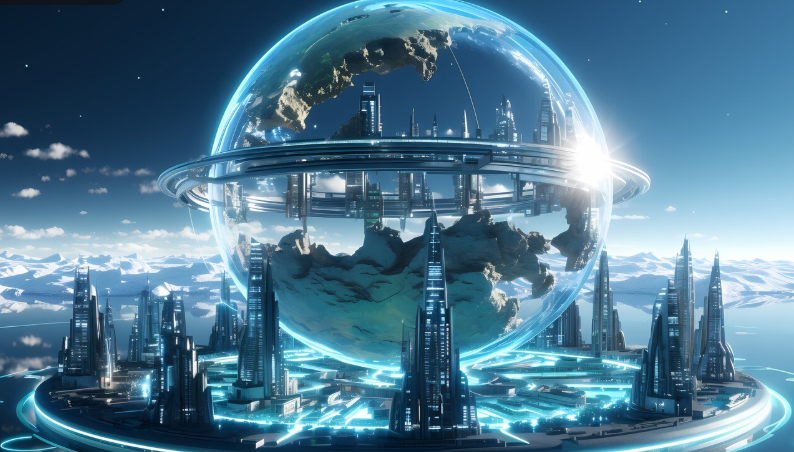Humanity has always looked to the stars with curiosity and ambition. Over the past few decades, space exploration has evolved from short-term missions to the Moon to ambitious plans for colonizing other planets. Mars, in particular, has become the primary focus of future human settlement due to its relative proximity and potential to support life. However, Mars is only the beginning—advancements in space travel could eventually take humans beyond our solar system. This article explores the challenges, technologies, and potential future of space colonization.
Why Mars?
Mars is considered the most viable planet for colonization due to several factors:
- Surface Conditions: Unlike other planets in the solar system, Mars has a solid surface where humans can build habitats.
- Water Presence: Evidence of water ice on Mars suggests that future settlers may be able to extract and use it for drinking, agriculture, and fuel production.
- Similar Day Length: A Martian day (called a “sol”) lasts approximately 24.6 hours, making it easier for humans to adapt to its cycle.
- Potential for Terraforming: Although extremely difficult, some scientists believe that Mars could be made more Earth-like over time through atmospheric and environmental modifications.
The Challenges of Colonizing Mars
While Mars presents exciting opportunities, numerous challenges must be addressed before human settlement can become a reality.
1. Harsh Environment
Mars has a thin atmosphere composed mostly of carbon dioxide, with little protection against cosmic radiation and extreme temperature fluctuations. Future habitats must be designed to:
- Shield settlers from radiation exposure
- Maintain stable oxygen and pressure levels
- Provide heating and insulation against frigid Martian temperatures
2. Long-Distance Travel
A journey to Mars takes between six to nine months, depending on the alignment of Earth and Mars. This poses several risks:
- Prolonged exposure to microgravity, which can weaken astronauts’ bones and muscles
- Limited emergency support, as real-time communication with Earth takes between 5 to 20 minutes
- Psychological challenges due to isolation and confined living spaces
3. Sustainable Life Support Systems
For a colony to survive long-term, it must be self-sufficient. This includes:
- Food production: Growing crops in Martian soil using hydroponics or aeroponics
- Water recycling: Extracting water from ice deposits and recycling wastewater
- Energy generation: Utilizing solar power or small nuclear reactors for a reliable energy source
4. Economic and Political Challenges
The cost of sending humans to Mars is estimated in the hundreds of billions of dollars. Sustainable colonization will require:
- International collaboration between space agencies and private companies
- Legal frameworks for governing Martian settlements and resource utilization
- Economic incentives to attract investment in space industries
The Technologies Enabling Space Colonization
Several groundbreaking technologies are being developed to make Mars colonization possible.
1. Reusable Rockets
Companies like SpaceX have pioneered reusable rocket technology, significantly reducing the cost of space travel. The Starship rocket is designed to transport large crews and cargo to Mars and beyond.
2. Advanced Propulsion Systems
Traditional chemical rockets are inefficient for deep space travel. Future propulsion technologies could include:
- Nuclear Thermal Propulsion (NTP): Using nuclear reactions to heat propellants for greater efficiency
- Ion Thrusters: Providing continuous thrust for long-duration missions
- Fusion Propulsion: A theoretical concept that could dramatically shorten interplanetary travel time
3. AI and Robotics
AI-powered robots will play a crucial role in constructing habitats, mining resources, and maintaining infrastructure before human arrival. Autonomous systems will reduce human risk and enhance efficiency.
4. 3D Printing and In-Situ Resource Utilization (ISRU)
Transporting building materials from Earth is impractical. 3D printing technology will allow colonists to use Martian regolith (soil) to build shelters, tools, and even components for spacecraft.
Beyond Mars: The Future of Interstellar Exploration
While Mars is the first step, humanity’s long-term vision extends beyond our solar system.
1. Colonizing the Moons of Jupiter and Saturn
- Europa: A moon of Jupiter with a subsurface ocean that could harbor life
- Titan: Saturn’s largest moon, with an atmosphere and liquid methane lakes that could support future settlements
2. Space Habitats and Artificial Worlds
Future civilizations may live in O’Neill cylinders—massive space stations that simulate Earth-like gravity and conditions. These habitats could be built in Earth’s orbit, the Moon’s orbit, or near asteroids for resource extraction.
3. Faster-than-Light Travel
While currently theoretical, warp drives and interstellar travel concepts are being explored. If breakthroughs in physics occur, humanity could one day reach exoplanets in distant star systems, such as Proxima Centauri b, a potentially habitable planet 4.2 light-years away.
Conclusion
The dream of colonizing Mars and beyond is no longer confined to science fiction. With advancements in rocket technology, artificial intelligence, and space infrastructure, the first human settlement on Mars could become a reality within the next few decades. However, significant challenges remain, requiring innovation, collaboration, and perseverance.
By pushing the boundaries of space exploration, humanity is not only securing its survival but also opening a new chapter in our cosmic journey—one that could eventually lead us beyond Mars, beyond our solar system, and into the stars.


